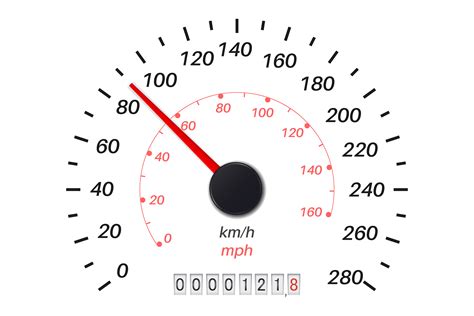Cuanto Es 100 Millas En Kilometros
Kalali
Mar 28, 2025 · 4 min read

Table of Contents
How Many Kilometers are in 100 Miles? A Comprehensive Guide to Unit Conversion
Knowing how to convert units of measurement is a crucial skill, whether you're planning a road trip, calculating distances for a project, or simply satisfying your curiosity. This comprehensive guide delves into the conversion of 100 miles to kilometers, exploring the underlying principles and offering various methods to perform the calculation. We'll also look at the practical applications of this conversion and dispel common misconceptions.
Understanding Miles and Kilometers
Before we dive into the conversion, let's clarify the units involved:
-
Miles (mi): A unit of length in the imperial and US customary systems. Historically derived from the Roman mile, it's a measure deeply ingrained in many countries' infrastructure and everyday life.
-
Kilometers (km): A unit of length in the metric system. The metric system, based on powers of 10, is preferred internationally for its simplicity and ease of conversion between units. A kilometer is 1000 meters.
The key difference lies in the systems' foundations – imperial units are based on often arbitrary historical measures, while the metric system is logically structured, making conversions straightforward.
Calculating 100 Miles to Kilometers: The Simple Method
The most straightforward approach uses the conversion factor: 1 mile is approximately equal to 1.60934 kilometers.
To convert 100 miles to kilometers, we simply multiply:
100 miles * 1.60934 kilometers/mile ≈ 160.934 kilometers
Therefore, 100 miles is approximately 160.934 kilometers. For most practical purposes, rounding this to 161 kilometers is perfectly acceptable.
Different Approaches to Conversion
While the direct multiplication method is the easiest, understanding alternative methods can provide a deeper comprehension of unit conversion.
-
Using a Conversion Calculator: Online conversion calculators readily perform this task. Simply input the value in miles and specify the desired unit (kilometers), and the calculator will provide the equivalent. These are convenient but don't necessarily enhance understanding.
-
Proportion Method: This method is particularly useful for understanding the relationship between the units. Set up a proportion:
1 mile / 1.60934 kilometers = 100 miles / x kilometers
Solving for x gives you the same result as direct multiplication: x ≈ 160.934 kilometers.
Practical Applications of Mile to Kilometer Conversion
The ability to convert between miles and kilometers is vital in numerous scenarios:
-
Travel Planning: Whether planning a road trip domestically or internationally, understanding distances in both miles and kilometers is essential for accurate route planning, fuel calculation, and estimating travel time.
-
Mapping and Navigation: Many GPS devices and mapping apps allow you to switch between miles and kilometers. Understanding both units ensures you can interpret distances accurately regardless of the map's setting.
-
Sports and Fitness: Many fitness trackers and apps use either miles or kilometers to track distance. Knowing the conversion factor allows for easy comparison and understanding of your progress.
-
Real Estate: Property listings often use both units, especially in regions where both systems are commonly used. Converting between them is necessary for accurate comparisons.
-
Scientific and Engineering Applications: Accurate unit conversion is critical in fields like engineering and physics, where precise calculations are paramount.
Addressing Common Misconceptions
Several misconceptions surround the mile-kilometer conversion:
-
Assuming a simple whole number conversion: Many people mistakenly believe the conversion is a simple ratio, like 1 mile being equal to 1.5 or 2 kilometers. This is incorrect, leading to inaccurate calculations.
-
Ignoring the precision of the conversion factor: Rounding the conversion factor too aggressively can lead to significant errors, especially over longer distances.
-
Confusing miles and nautical miles: While both are units of distance, nautical miles are longer than statute miles and are used in maritime and aviation navigation. They should not be used interchangeably.
Beyond the Basics: Exploring Other Unit Conversions
The principles used for converting miles to kilometers can be extended to other unit conversions:
-
Converting kilometers to miles: Simply reverse the process; divide the number of kilometers by 1.60934.
-
Converting miles to yards, feet, or inches: Utilize the known relationships between these imperial units to perform stepwise conversions.
-
Converting between metric units: Conversions within the metric system are incredibly easy due to its decimal-based nature. For example, converting kilometers to meters involves multiplying by 1000.
Conclusion: Mastering Unit Conversion for a Globally Connected World
Mastering unit conversion is a valuable skill applicable in countless situations. Understanding the methods and principles involved in converting 100 miles to kilometers, and similar conversions, allows for accurate calculations and effective communication across different systems of measurement. The ability to seamlessly navigate between miles and kilometers is essential in our increasingly interconnected world. This understanding enhances problem-solving abilities and facilitates clear communication across diverse contexts, emphasizing the importance of accurate unit conversions in everyday life and various professional fields. Remember to use a precise conversion factor and understand the implications of rounding to ensure accuracy in your calculations.
Latest Posts
Latest Posts
-
What Is 133 Cm In Feet
Mar 31, 2025
-
What Role Do Producers Play In An Ecosystem
Mar 31, 2025
-
Cuantos Grados Son 49 Fahrenheit En Centigrados
Mar 31, 2025
-
Why Are Seasons Reversed In The Southern Hemisphere
Mar 31, 2025
-
What Types Of Intermolecular Forces Are Found In Ch2cl2
Mar 31, 2025
Related Post
Thank you for visiting our website which covers about Cuanto Es 100 Millas En Kilometros . We hope the information provided has been useful to you. Feel free to contact us if you have any questions or need further assistance. See you next time and don't miss to bookmark.
